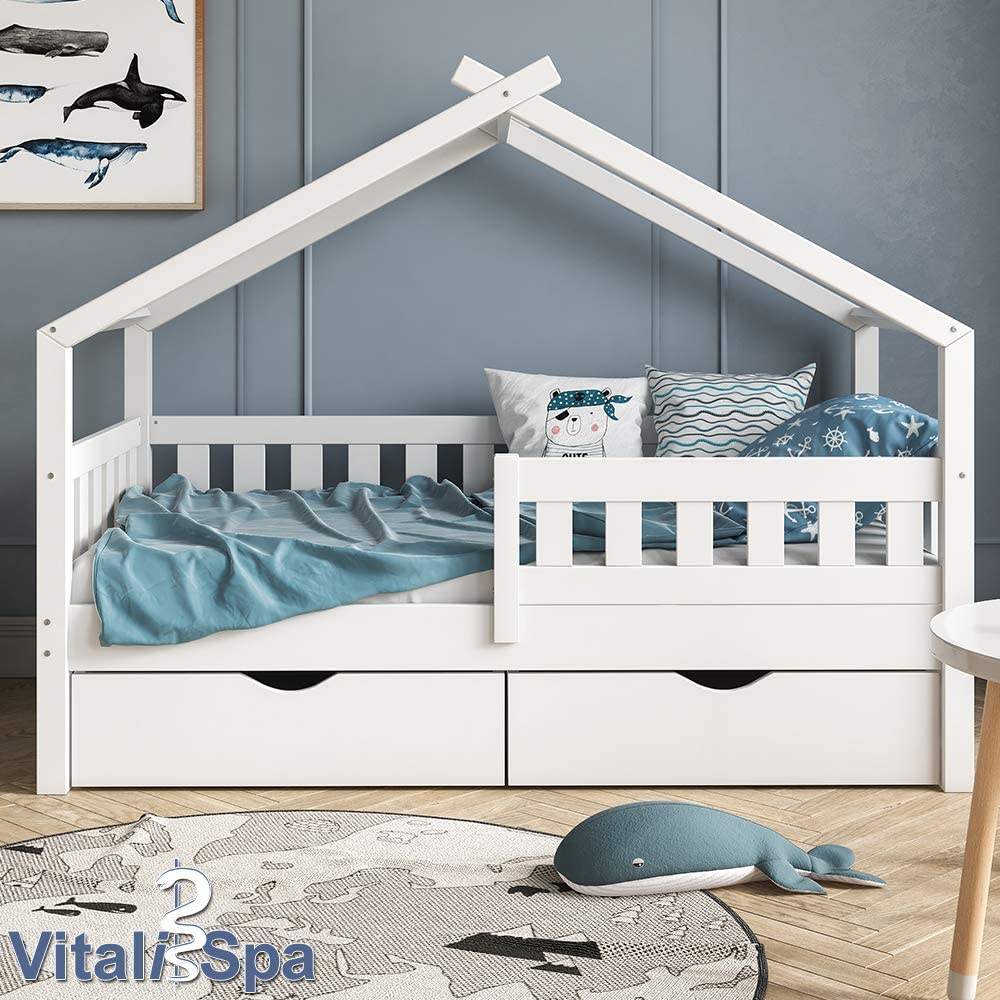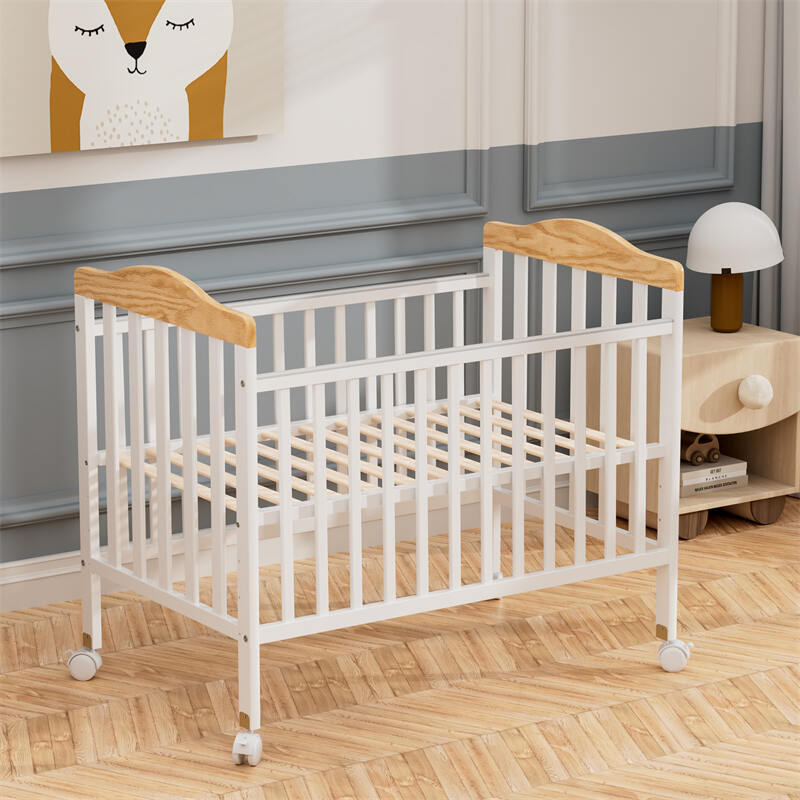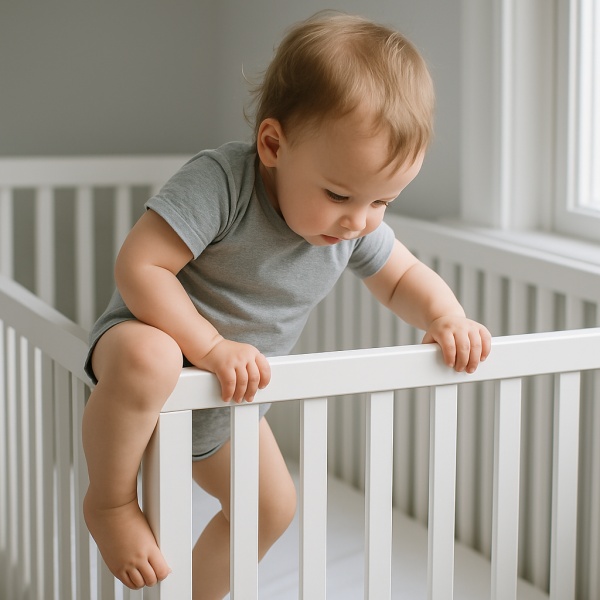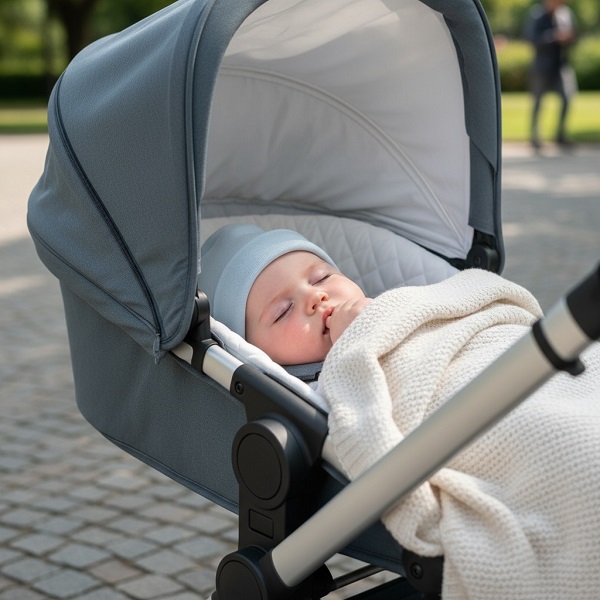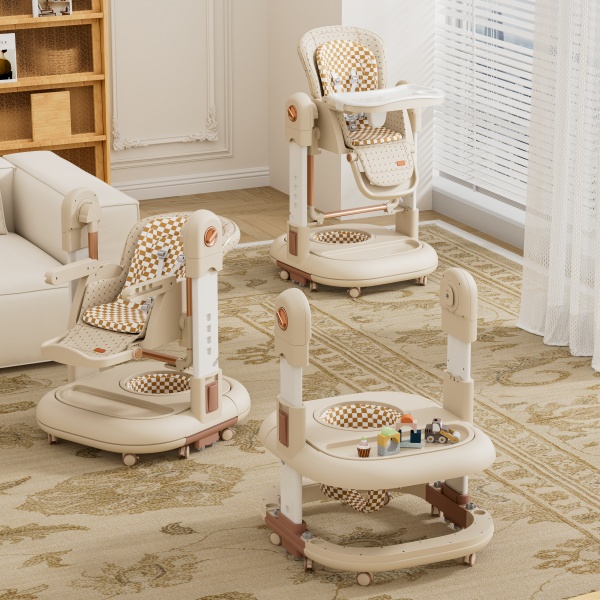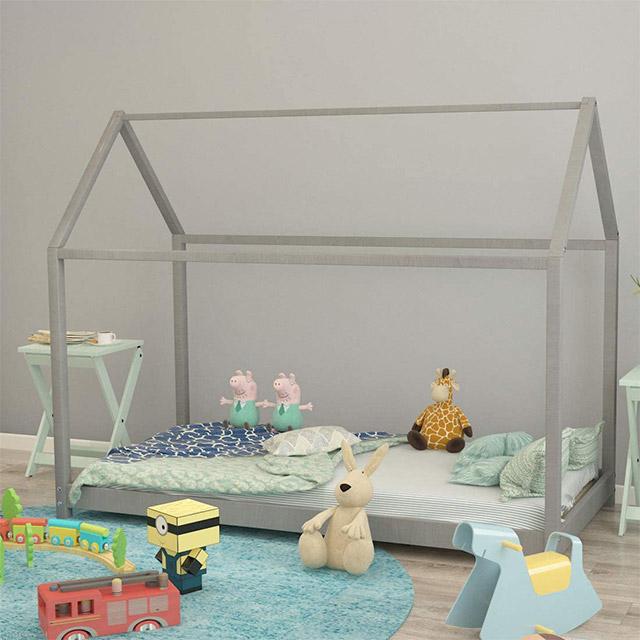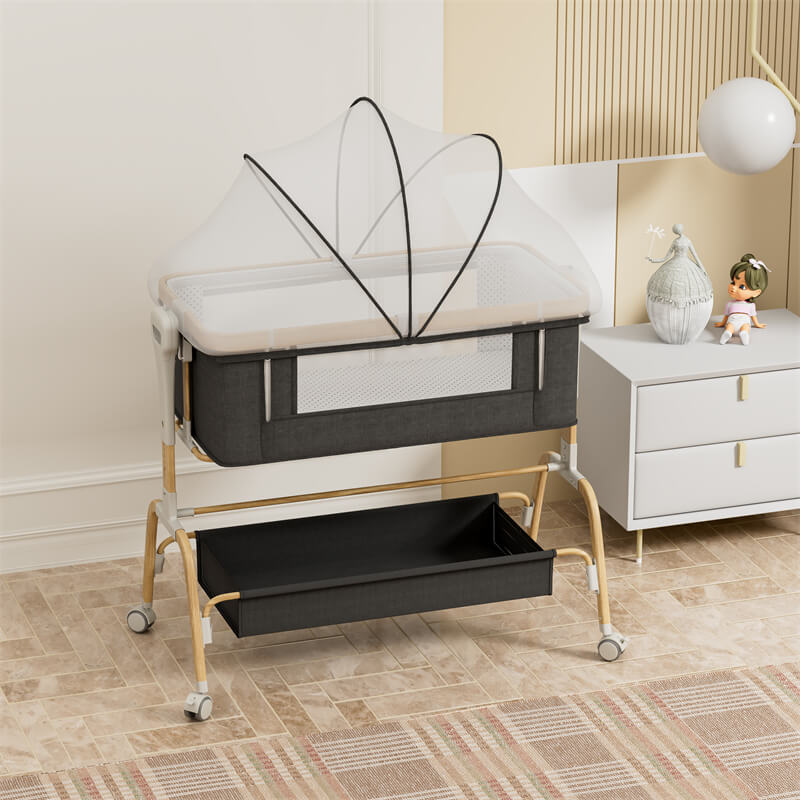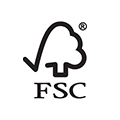The moment your little one starts peering over the edge of their crib with a mischievous grin, you know it’s coming: the transition to a toddler bed. Recent AAP research reveals that 4 in 10 parents hurriedly swapped cribs for toddler beds after discovering their escape artist-in-training.
However, with so many options on the market, how can you possibly choose a bed that’s safe, durable, and maybe even a little fun?
This guide is here to untangle those questions. We’ll walk you through everything from decoding safety certifications to finding a toddler bed that supports healthy sleep habits. We’ve woven in insights from pediatric occupational therapists and real-world parent experiences to help you make choices that align with your family’s unique rhythm.
When Is the Right Time to Transition to a Toddler Bed?
There’s no universal “right time” stamped on the parenting calendar—and that’s what makes this decision so tricky. While many parents start considering a toddler bed around age 2, the truth is, that your child’s behavior matters far more than their birthday.
First, safety trumps everything. If your toddler has mastered the art of crib escape—hoisting themselves over the rails like a pint-sized gymnast—it’s time to act, even if they’re barely 18 months.
The American Academy of Pediatrics (AAP) warns that falls from cribs account for over 10,000 emergency room visits annually in the U.S. alone. If your child’s crib rail dips below chest level when they stand, or if they’ve attempted a jailbreak, delaying the transition risks injury.
That said, timing isn’t just about your child. Consider family dynamics, too. Introducing a toddler bed mid-potty-training or during a new sibling’s arrival can backfire. Pediatric sleep consultants often advise avoiding major transitions within 3-4 months of a life change (e.g., moving homes, or starting daycare) to prevent sleep regressions.
Safety Features to Look For
A toddler bed isn’t just a cute mini version of an adult bed. It’s a safety-critical piece of equipment designed to protect a child who’s still mastering basic motor skills. While aesthetics might catch your eye, features like guardrail height and mattress fit can mean the difference between a peaceful night and a trip to the ER.
Safety Guardrails
Guardrails aren’t optional, even if the bed is low to the ground. Look for rails that extend at least 5 inches above the mattress. But height alone isn’t enough. Ensure they’re securely attached and span the entire length of the bed. Partial rails might look sleek, but they leave gaps where limbs—or worse, heads—can get trapped.
Certified for Safety
ASTM International F1821: The gold standard for toddler beds, covering everything from structural integrity to guardrail spacing.
JPMA (Juvenile Products Manufacturers Association): Indicates third-party testing for compliance with federal safety regulations.
If a product lacks these labels, walk away.
Mattress Fit
A mattress that’s even slightly too small creates gaps where toddlers can become entrapped. Use the “two-finger rule”: If you can fit more than two fingers between the mattress and bed frame, it’s unsafe. Most toddler beds are designed for standard crib mattresses (51.75” x 27.25”), so stick with that size unless the manufacturer specifies otherwise.
Non-Toxic Materials
Paint/Finish: Ensure it’s lead-free and certified by GREENGUARD or CPSIA (Consumer Product Safety Improvement Act).
Wood: Solid hardwood (like maple or birch) resists splintering better than particleboard or plastic.
Avoid beds with a strong chemical odor—they may off-gas volatile organic compounds (VOCs), which the EPA links to respiratory irritation in children.
Avoid These Hidden Hazards
Decorative Cutouts: Charming heart-shaped designs? Adorable, but finger-pinch risks. Opt for solid panels.
Sharp Edges: Run your hand along all surfaces. Any rough or angular edges can cause cuts, especially during midnight escapades.
Detachable Decorations: Bows, knobs, or decals that a curious toddler could pry off become choking hazards.
While no bed is 100% accident-proof, these features drastically reduce risks. If a bed prioritizes whimsy over these fundamentals, it’s not worth the gamble.
Top 5 Must-Have Features for Modern Toddler Beds

Adaptive Safety Guardrails
Gone are the days of one-size-fits-all rails. Modern beds now offer adjustable or removable guardrails that cater to your child’s evolving independence. Look for rails that extend at least 5 inches above the mattress (per ASTM safety guidelines) but can be lowered as your toddler gains confidence.
Some models even feature rounded, vertical slats to prevent limbs from slipping through. The best part? These rails integrate seamlessly into the bed’s design, avoiding the clunky “add-on” feel of older models.
Eco-Conscious Materials
Today’s parents aren’t just safety-conscious—they’re planet-conscious. Prioritize beds made from sustainably sourced solid wood (like birch or maple) or recycled metal, finished with non-toxic, water-based paints or stains. These materials aren’t just better for the environment; they’re also more durable, resisting cracks and splinters that can snag tiny hands.
Space-Smart Storage Solutions
With urban living spaces shrinking, modern toddler beds are doubling as storage hubs. Think integrated drawers beneath the mattress frame or built-in shelves along the sides—perfect for stashing bedtime books, pajamas, or stuffed animals. These designs eliminate the need for bulky dressers, a win for cramped bedrooms.
Convertible Longevity
Why buy a bed that’s obsolete in two years? Convertible designs now transition effortlessly from toddler beds to daybeds or even full-sized twin frames with removable rails. This isn’t just a cost-saving hack; it’s a psychological boost for kids who thrive on consistency.
Tool-Free, Stress-Free Assembly
Modern beds are leaning into intuitive, tool-free assembly—think interlocking panels, pre-attached hardware, or numbered parts that snap into place. Bonus points if the bed can be assembled solo in under 20 minutes.
Types of Toddler Beds
Standard Toddler Beds: These no-fuss frames support the crib-to-bed transition, using standard crib-sized mattresses (28”x52”). Built-in guardrails and a low profile (12-18” height) provide step-on/step-off ease. Ideal for small spaces and cautious climbers.
Convertible Toddler Beds: Grow-with-me designs that adapt as children age. Many convert from cribs (via removable front rails) to daybeds, then to twin beds using extension kits. Prioritize models with tool-free conversions and ASTM-certified hardware for longevity.
Themed Beds: Playful designs (animal shapes, miniature houses) that engage toddlers’ imaginations. Opt for timeless motifs over licensed characters to extend usability. Ensure decorative elements (ladders, roofs) are securely anchored and free of pinch points.
Montessori Floor Beds: Ultra-low frames (≤6” height) promoting self-guided sleep routines. They typically lack guardrails and rely on floor mats for roll-off protection. Best paired with child-proofed rooms and firm, gap-free mattresses.
Low-Profile Platform Beds: Modern designs (18-24” height) blending safety and style. Many feature subtle side rails and hidden storage drawers. Choose models with rounded edges and non-slip feet for stability on hard floors.
Canopy or House-Frame Beds: These whimsical designs feature fabric canopies or wooden frames that mimic a tiny house. They create a cozy, enclosed feel reminiscent of a crib, which can soothe anxious toddlers. Ensure fabrics are breathable and fire-retardant.
Space-Saving Beds: Think loft beds with play areas underneath, trundles for sleepovers, or foldable designs for grandparents’ homes. These maximize vertical or horizontal space in tight quarters.
Key Factors to Consider Before Buying
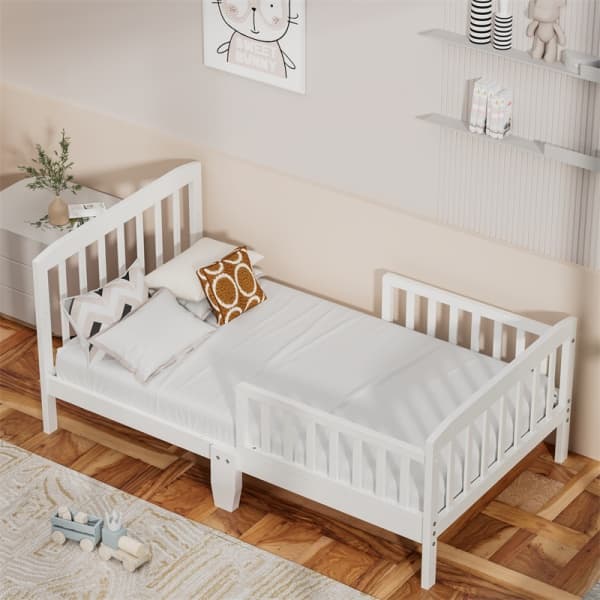
Room Size and Layout
A bed that swallows up half the nursery is a recipe for chaos. Measure your space meticulously. Allow at least 24 inches of clearance around the bed for safe movement.
Consider the bed’s orientation. Will it block natural light, closet access, or airflow from vents?
If space is tight, opt for low-profile designs or beds with built-in storage to avoid overcrowding.
Your Child’s Sleep Personality
Is your toddler a fearless explorer or a cautious sleeper? Their temperament dictates the bed’s design.
Adventurous climbers: Prioritize beds with full-length guardrails and minimal footholds.
Anxious sleepers: A canopy bed or house-frame design can mimic the cocoon-like feel of a crib.
Sensory-sensitive kids: Avoid beds with rough textures or creaky joints that could disrupt sleep.
If your child still wakes frequently, proximity matters. Can the bed fit near your room temporarily?
Longevity vs. Temporary Use
Will this bed last through preschool, or is it a short-term fix? Convertible models save money in the long term but cost more upfront. For temporary solutions (e.g., grandparent visits), foldable or minimalist beds work.
Aesthetic Flexibility
Themed beds may charm your toddler today, but will they still love that cartoon character in a year? Neutral designs (solid colors, wood tones) age better and allow creativity through removable decals or themed bedding.
Budget Realities
While splurging on a heirloom-quality bed is tempting, be honest.
Will this bed endure multiple kids, or is it a one-child solution?
Does the price justify features you’ll actually use (e.g., storage for cluttered homes)?
Choosing the Right Mattress for a Toddler Bed
A mattress that feels plush may seem comfortable but poses risks for developing toddlers. Proper spinal alignment requires firm, consistent support.
To assess firmness, press firmly into the mattress center. A safe option will resist deep indentation and rebound quickly, avoiding the slow recovery of overly soft materials. The ideal balance resembles the supportive feel of high-density foam rather than excessive sinkage.
Internal construction significantly affects safety and comfort. Innerspring mattresses with closely spaced coils (15+ gauge) provide durable support but require regular checks for sagging. High-density foam options should carry CertiPUR-US certification, ensuring they’re free from harmful flame retardants. Natural materials like organic cotton or latex reduce chemical exposure but often come at a premium.
Vinyl covers, while waterproof, may release phthalates. Instead, select a breathable, washable cover made from food-grade polyethylene (PE) or tightly woven polyester. These materials simplify cleaning after spills while maintaining airflow.
Toddlers are notorious for practicing parkour in their sleep. A mattress that sits too high increases fall risks, especially if your child rolls or climbs. A 5–6 inch thickness paired with a bed frame no taller than 12 inches minimizes fall risks. This setup allows independent climbing while reducing injury potential from nighttime movements.
Children with allergies or respiratory sensitivities benefit from tightly sealed, antimicrobial covers. A full-zip hypoallergenic encasement (not just a pad) helps block dust mites. Avoid moisture-trapping materials like wool or down, opting instead for moisture-wicking fabrics that resist allergen buildup.
Should I skip the toddler bed stage?
Many parents wonder whether to transition directly to a twin bed or use a toddler bed as an intermediate step.
Pediatric occupational therapists emphasize the role of proprioception—a child’s sense of body position—in sleep transitions. Toddler beds, with their enclosed sides, provide tactile feedback that helps children stay oriented in space. A twin bed’s open edges remove these cues, which can disorient sensitive sleepers.
Developmentally, toddler beds maintain a sense of crib-like security during a phase when many children still emotionally rely on their sleep space. This gradual change helps build independence—like practicing swimming in shallow water before moving to deeper areas.
This transitional step isn’t mandatory. Exceptionally tall children, those with advanced coordination, or kids who resist confinement might adapt better to twin beds. Similarly, naturally, independent children who’ve already slept successfully outside their cribs often transition smoothly without this intermediate step.
Practical considerations matter too. Families managing tight budgets or small spaces might prefer skipping the toddler bed phase, especially if their child’s size suggests quick outgrowing. Avoiding this step reduces both expenses and the number of sleep environment changes a child navigates.
Conclusion
Safety will always be the bedrock of this choice. From ASTM certifications to mattress firmness, the details matter. But beyond the checklists lies a deeper layer: understanding your child’s unique temperament. Are they a cautious sleeper who clings to routine, or a daring explorer who treats bedtime like a playground? The answer shapes everything, from guardrail height to the bed’s distance from the floor.
Clafbebe is a one-stop service manufacturer of infant and toddler furniture (including toddler beds), specializing in OEM and ODM services for customers, and offering competitive prices. All products rigorously comply with global quality and safety certifications, ensuring reliability for families worldwide.
Clafbebe commitment to consistent quality and value has solidified their reputation as a go-to partner for retailers and brands alike.
Recommended Related Articles:

